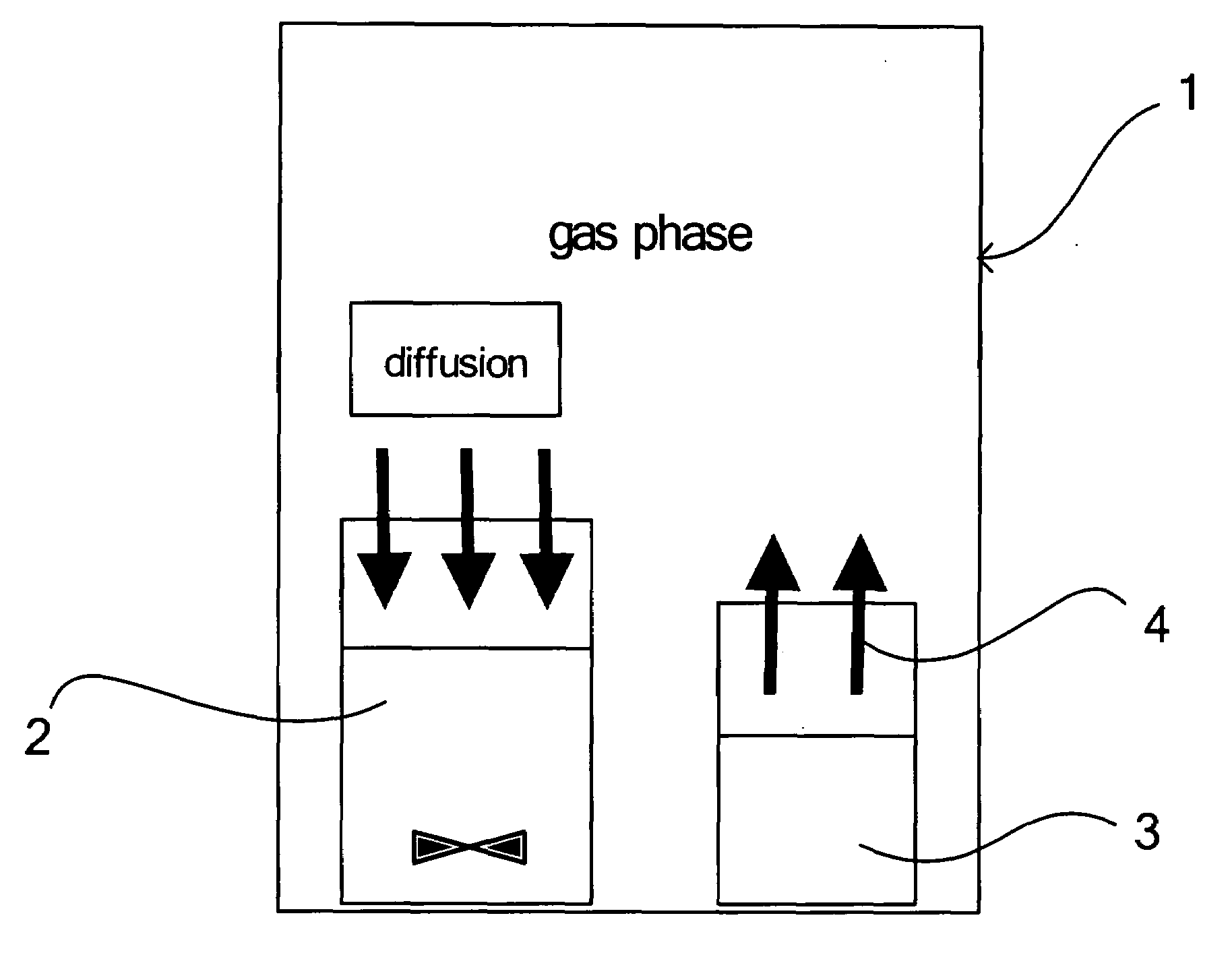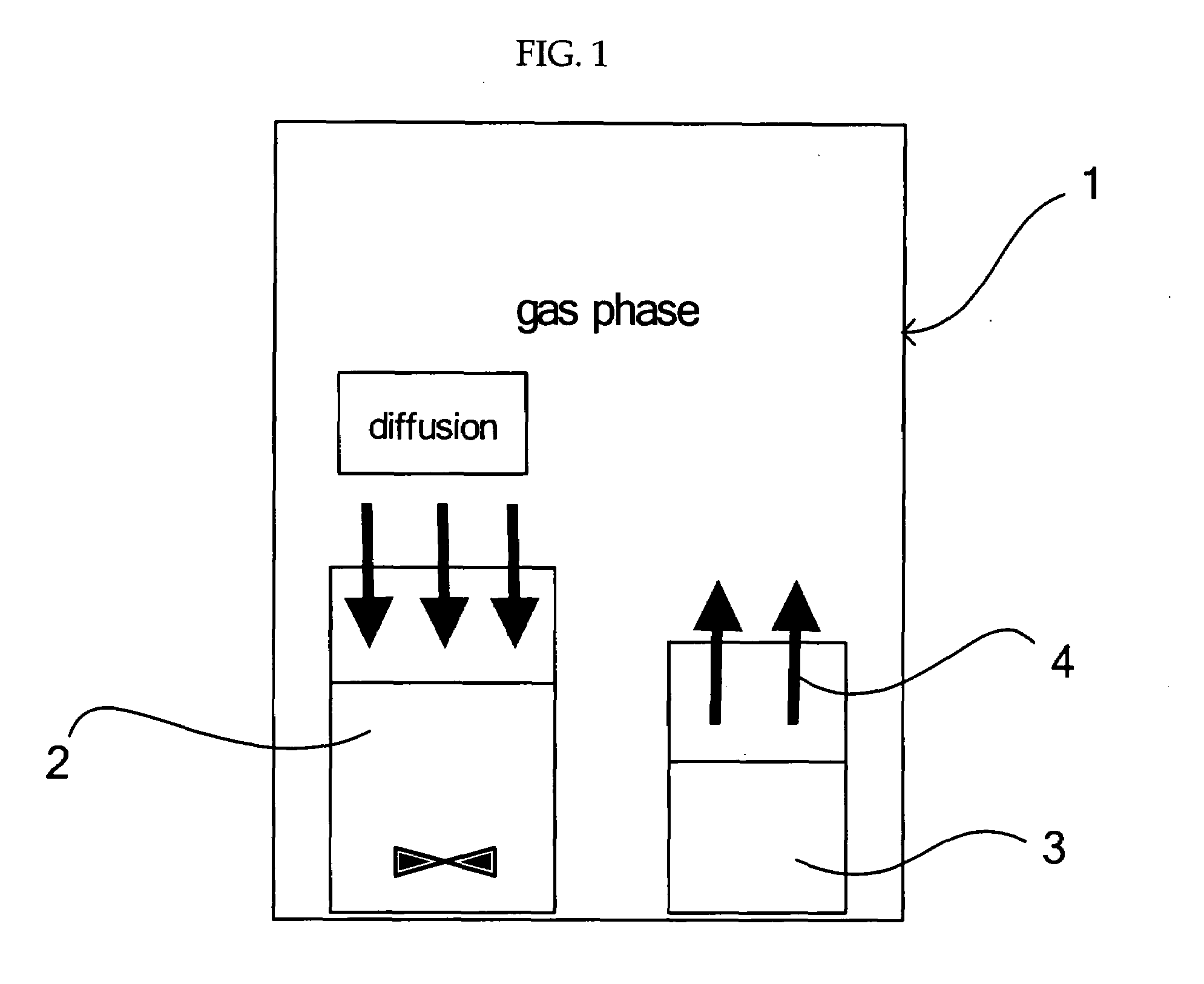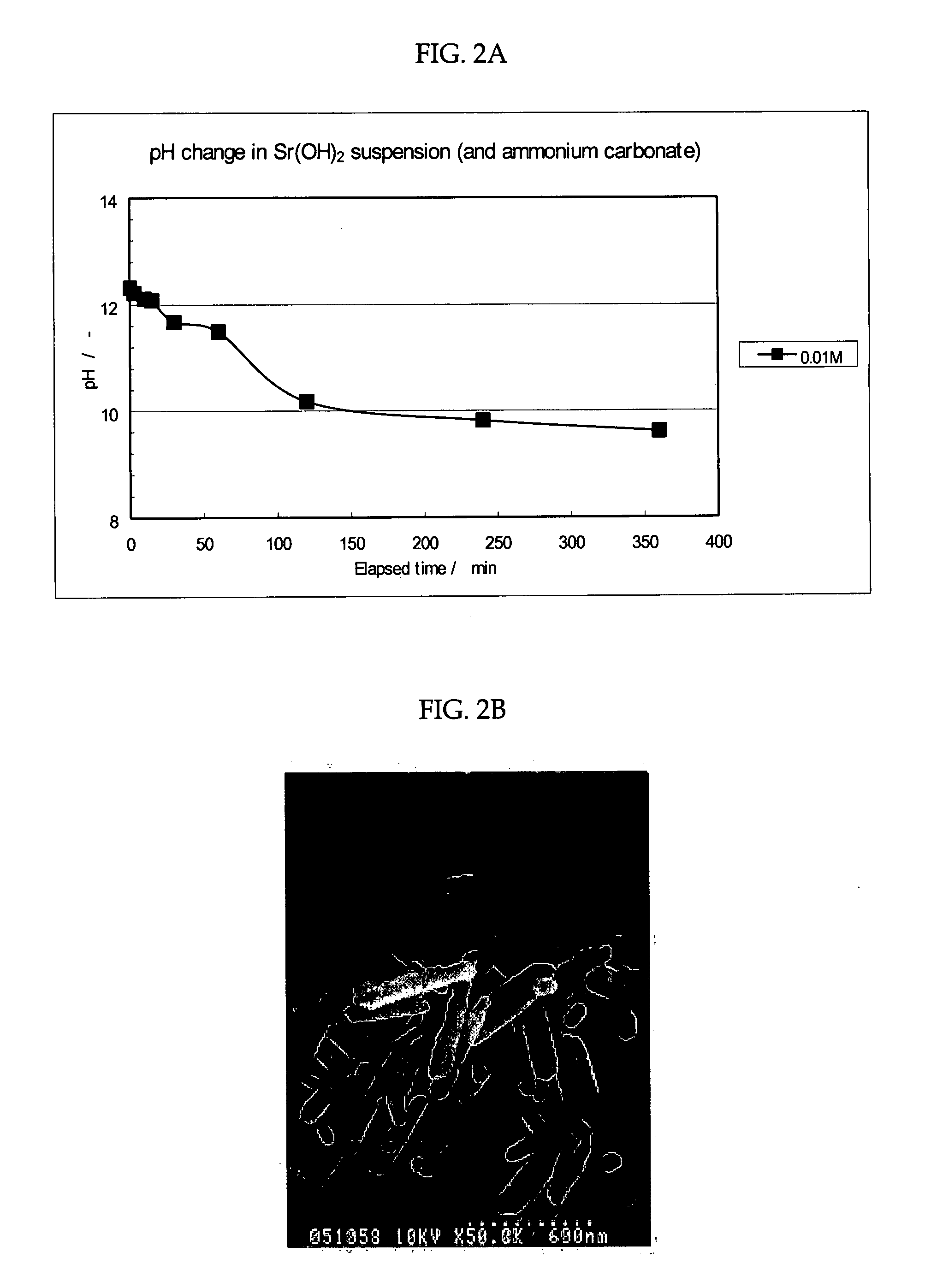Process for Producing Carbonate Particles
a carbonate and particle technology, applied in the preparation of carbonate/bicarbonate, lead carbonates, magnesium compounds, etc., can solve the problems of serious problems such as birefringence of general optical polymer materials by means of any of the molding techniques, inability to achieve desired, controlled size, etc., and achieve the effect of efficient and convenient formation
- Summary
- Abstract
- Description
- Claims
- Application Information
AI Technical Summary
Benefits of technology
Problems solved by technology
Method used
Image
Examples
example 1
Preparation of Carbonate Particles
[0068]As shown in FIG. 1, a vessel containing 10 ml of 0.01 M strontium hydroxide (Sr(OH)2) suspension (pH of 12.2) as a liquid containing a metal ion source and a solid ammonium carbonate ((NH4)2CO3) as a carbonate source were placed in a closed vessel. Then, a carbon dioxide gas was generated and released from ammonium carbonate ((NH4)2CO3) into the gas phase in the closed vessel. The carbon dioxide gas released into the gas phase was slowly diffused and dissolved in a strontium hydroxide (Sr(OH)2) suspension while agitating the strontium hydroxide (Sr(OH)2) suspension at a reaction temperature of 25° C. for 360 min. to be reacted with the carbon dioxide gas, thereby obtaining strontium carbonate crystals as carbonate crystals. The pH of the liquid containing the strontium carbonate crystal was 9.4 at the completion of the reaction. The agitation was conducted at 500 rpm.
[0069]The relation between pH of the strontium hydroxide (Sr(OH)2) suspension...
example 2
Preparation of Carbonate Particles
[0071]Carbonate (calcium carbonate) crystals were produced in a manner similar to that described in Example 1, with a 0.01M calcium hydroxide (Ca(OH)2) suspension used instead of the 0.01M strontium hydroxide (Sr(OH)2) suspension. The calcium carbonate crystals thus produced were observed using the SEM. The measurement results of various parameters are shown in Table 3.
example 3
Preparation of Carbonate Particles
[0072]Carbonate (strontium carbonate) crystals were produced in a manner similar to that described in Example 1, with as the solvent, isopropyl alcohol (IPA), added to the strontium hydroxide (Sr(OH)2) suspension from which the strontium carbonate crystals were obtained for the purpose of reducing the solubility of the crystals. The strontium carbonate crystals thus produced were observed using the SEM. The measurement results of various parameters are shown in Table 3.
PUM
| Property | Measurement | Unit |
|---|---|---|
| aspect ratio | aaaaa | aaaaa |
| temperature | aaaaa | aaaaa |
| particle size distribution | aaaaa | aaaaa |
Abstract
Description
Claims
Application Information
 Login to View More
Login to View More - R&D
- Intellectual Property
- Life Sciences
- Materials
- Tech Scout
- Unparalleled Data Quality
- Higher Quality Content
- 60% Fewer Hallucinations
Browse by: Latest US Patents, China's latest patents, Technical Efficacy Thesaurus, Application Domain, Technology Topic, Popular Technical Reports.
© 2025 PatSnap. All rights reserved.Legal|Privacy policy|Modern Slavery Act Transparency Statement|Sitemap|About US| Contact US: help@patsnap.com



